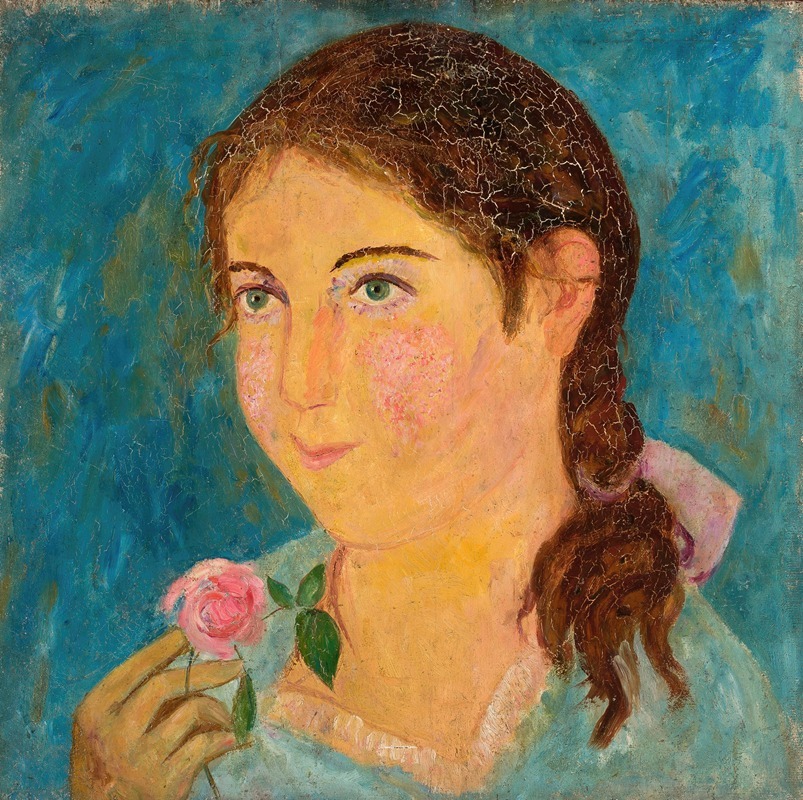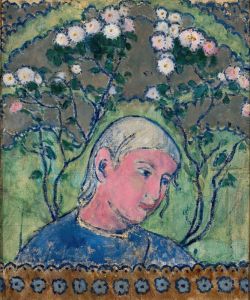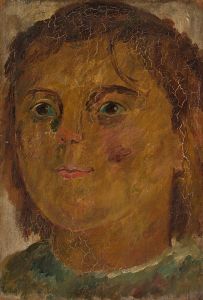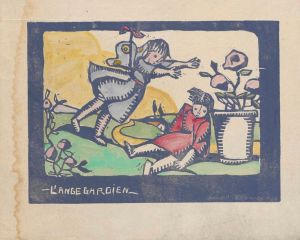
Girl holding a rose in her hand
A hand-painted replica of Tadeusz Makowski’s masterpiece Girl holding a rose in her hand, meticulously crafted by professional artists to capture the true essence of the original. Each piece is created with museum-quality canvas and rare mineral pigments, carefully painted by experienced artists with delicate brushstrokes and rich, layered colors to perfectly recreate the texture of the original artwork. Unlike machine-printed reproductions, this hand-painted version brings the painting to life, infused with the artist’s emotions and skill in every stroke. Whether for personal collection or home decoration, it instantly elevates the artistic atmosphere of any space.
Tadeusz Makowski was a Polish painter known for his unique style that combined elements of Post-Impressionism and Cubism, often focusing on themes of childhood and innocence. One of his notable works is "Girl Holding a Rose in Her Hand," which exemplifies his distinctive approach to capturing the essence of his subjects through a blend of geometric forms and soft, emotive expressions.
Makowski was born in 1882 in Oświęcim, Poland, and he initially studied classical philology before turning to art. He attended the Academy of Fine Arts in Kraków, where he was influenced by the teachings of Józef Mehoffer and Jan Stanisławski. In 1908, Makowski moved to Paris, a city that was then the epicenter of the avant-garde art movement. It was in Paris that he became acquainted with the works of artists like Pablo Picasso and Georges Braque, whose Cubist styles left a lasting impression on him.
"Girl Holding a Rose in Her Hand" is a testament to Makowski's ability to merge the structural elements of Cubism with a softer, more humanistic approach. The painting features a young girl, rendered with simplified geometric shapes that suggest the influence of Cubism. However, unlike the often abstract and fragmented nature of Cubist works, Makowski's painting retains a sense of warmth and accessibility. The girl's face is depicted with gentle, rounded forms, and her expression is serene and contemplative, evoking a sense of innocence and purity.
The rose in the girl's hand is a significant element of the composition. It serves as a symbol of beauty and fragility, complementing the theme of childhood innocence that is prevalent in Makowski's work. The use of color in the painting is also noteworthy; Makowski employs a muted palette, with soft pastels and earthy tones that enhance the gentle and introspective mood of the piece.
Makowski's time in Paris was crucial to his artistic development. He was part of a vibrant community of artists and intellectuals, and he exhibited his works in various salons and galleries. Despite the influence of the Parisian avant-garde, Makowski's Polish roots remained an integral part of his identity, and his works often reflect a synthesis of Polish folk art traditions and modernist techniques.
Throughout his career, Makowski maintained a focus on themes of childhood and simplicity, often depicting children in his paintings. This focus can be seen as a reflection of his own introspective nature and his desire to capture the essence of human experience in its most unadulterated form. "Girl Holding a Rose in Her Hand" is a prime example of this thematic preoccupation, showcasing Makowski's skill in conveying emotion and narrative through a minimalist yet evocative style.
Tadeusz Makowski passed away in 1932, but his works continue to be celebrated for their unique blend of form and feeling. "Girl Holding a Rose in Her Hand" remains a poignant example of his artistic vision, embodying the delicate balance between structure and sentiment that characterizes much of his oeuvre.


















